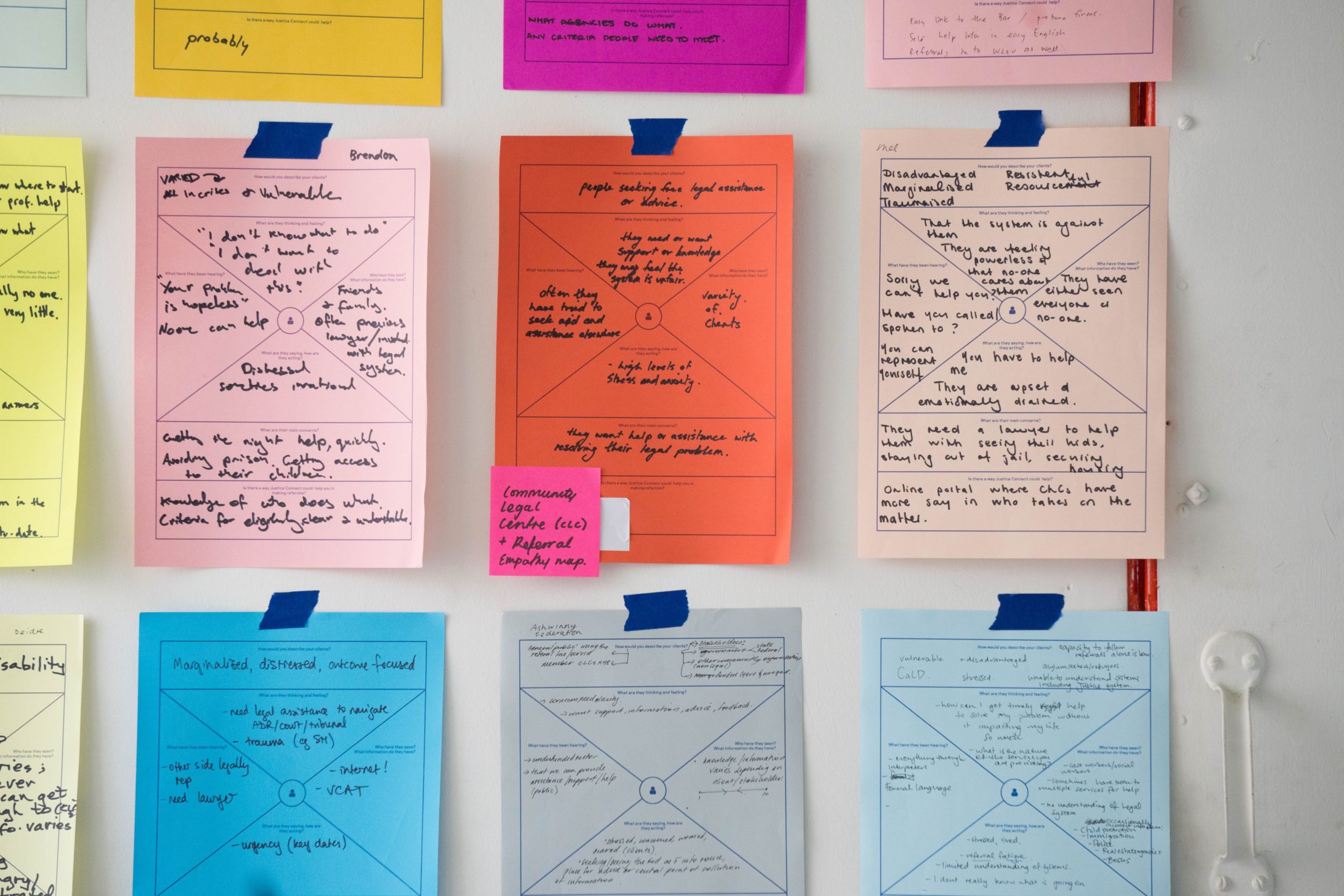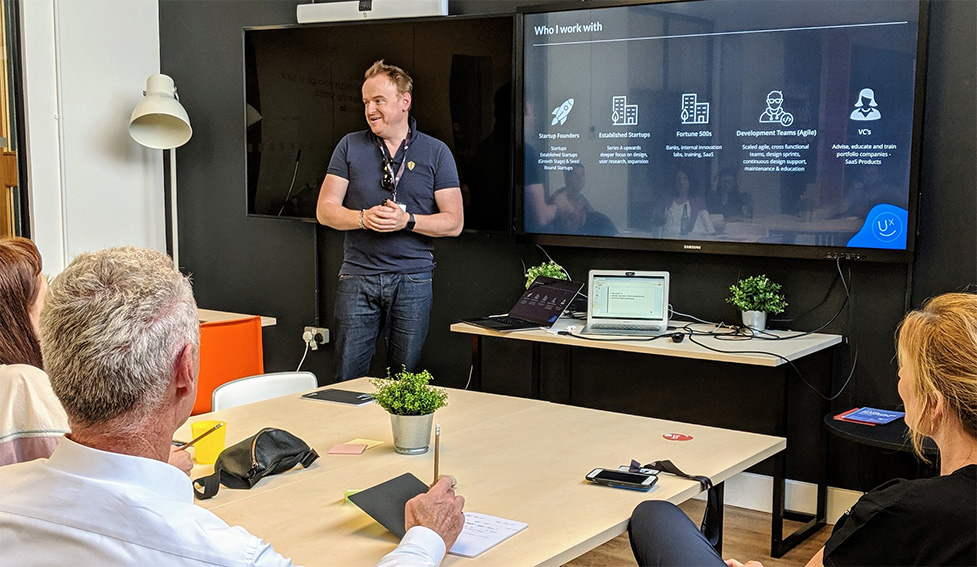

Don't you want to read? Try listening to the article in audio mode 🎧
Design Thinking is a planning model born in the 1960s. It is often linked to architectural design and areas in which design is a fundamental component.
Nowadays, Design Thinking tools are used in many sectors, from digital to marketing and where it is necessary to create something innovative and responsive to customer needs.
What is Design Thinking?
Design Thinking is an approach used to creatively solve practical problems. It is mainly based on the methods and processes used by designers, and it has really evolved and is applied in any field to design a product or a service, or when a strategic decision has to be made. Design thinking is extremely user-focused. The method concentrates on people and their needs and aims to find effective solutions to meet their requirements. It is therefore an approach based on finding solutions to user’s problems.The principles and phases of Design Thinking
The distinctive feature of Design Thinking is that it is sequential and focused on the user. It is therefore necessary to have the ability to solve problems in a creative and efficient manner, using codified principles and methodologies.The four principles of design thinking
There are various definitions of the principles of design thinking, those below were developed by C. Meinel and H. Leifer of the Hasso-Plattner-Institute of Design at Stanford University:- The human rule: regardless of the context, all design activities are social in nature and any innovation should be centred on a human point of view.
- The ambiguity rule: a problem can be portrayed in several different ways. Ambiguity is inevitable and cannot be completely eliminated or simplified. Experimenting and designing right up to the limit of knowledge and ability is essential to be able to see things differently.
- The rule of redesign: while technology and social conditions may change and evolve, basic human needs remain unchanged. In essence, in design thinking it is a matter of redesigning only the means to meet these needs and achieve the desired results.
- The rule of tangibility: making ideas tangible, in the form of prototypes, allows designers to convey them more effectively and quickly identify any aspect that needs improvement.
The five phases of the design thinking process
On the basis of these four principles, the process of design thinking can be divided into five phases, following the guidelines of the aforementioned Stanford University Institute of Design: Empathize, Define, Conceptualize, Prototype and Test.-
Empathize
2. Define the problem
Definition of the user’s problem is the second phase of the design thinking process. Following the gathering of information in the empathy stage the difficulties and obstacles encountered by users need to be defined and the problem the team is asked to solve is delineated. Obviously, the problem is analyzed and must be solved from the users’ point of view after having collected and analyzed their requirements.3. Conceptualize
After having acquired a solid knowledge of the users and clearly identified the problems, we start to design the solutions. At this stage, a great deal of creativity and the ability to conceptualize is required. The team must be brought together, possibly several times, in order to collect as many ideas as possible. Various creative techniques can be used, such as brainstorming and mind mapping. At the end of the creative phase, the best ideas are selected.4. Prototype
The fourth phase of the design thinking process involves transforming ideas into tangible products. A prototype is basically a small-scale version of the product that incorporates the potential solutions identified in the previous phases. This step is essential so as to bring out any problems and defects. During the prototype phase, the design solutions can be confirmed, improved, redesigned or rejected depending on the issues that arise due to the adjustments made to the prototype.5. Test
After prototyping it is necessary to test the solutions on the users. It is important to note that this phase is not always the end of the design thinking process. In fact, the results of the test phase often lead back to a previous phase. The feedback obtained may lead you to redefine the analysis of the original problem or develop new ideas that were not previously thought of.The advantages of design thinking
Due to its nature the design thinking process follows, to a certain extent, a logical sequence on the basis of a pre-defined order. The design thinking process is not linear, but flexible and fluid, because each new discovery that emerges from a phase means it is necessary to redesign and redefine what has been previously achieved. There are many advantages of using a design thinking approach in a business, education or marketing.Design thinking promotes creativity and innovation
Managers often rely on prior knowledge and experience to make decisions and plan new activity, especially when problem solving. Rather than repeating the same methods previously used design thinking encourages people to question their assumptions and consider alternative solutions. The whole process lends itself to stimulating analysis and exploring new options and ideas. Design Thinking is often considered a good middle course between an approach that is too tied to feelings and intuition and a scientific approach, because it is not based exclusively on analysis and logic. In fact, it is a good combination of the two different approaches, and it includes quantification and analysis of the results and research carried out on users.Users at the center of design
Another great advantage of design thinking is that users are at the heart of the process. It encourages companies and organizations to consider the people that use their products and services because it focuses on what they want and what the user feels. Design thinking encourages companies and organizations to consider the people who use their products. For the user, this means they have better products and services because they have been designed to meet their needs. For companies, this means having more satisfied customers and consequently better results.Conclusion
Design thinking is an efficient and effective design tool. It is efficient because, to some extent, its concepts are similar to those of Lean and Agile. It is effective because it uses some principles of Digital Transformation. Design thinking also involves optimizing projects, products or services following the principles of Lean Thinking. Continuous optimization, carried out even in small steps, simplifying individual parts, allows attention to be focused on the important things, eliminating waste that, in the case of digital products or services involves, for example, the elimination of lesser-used functions and steps no longer needed to achieve a result. In this process we also aim to continuously improve, in an iterative way, what has been designed on the basis of feedback from users. Some elements of the Agile method can be found in design thinking. In this process focus is also given to working in motivated teams equipped with the skills and technologies necessary to achieve the result in a short time. The principles of the Agile method, such as the requirement to be transparent about objectives and results, the need for the process to be based on teamwork and taken forward following to concept of incremental development, are also found in the background of design thinking. Finally, design thinking can also be considered a disruptive tool with respect to the previous methods, making it similar to Digital Transformation, which shares with design thinking the concept of absolute centrality of the customer and his needs. The customer-centric vision has a fundamental impact on the design of products and the search for solutions to user problems. Design thinking also requires new pathways to be created, new ways of making strategic decisions, all based on data. Design thinking is a data driven process in which proven components, creativity and innovation, create products that are useful to the user.
Article updated on: 09 August 2023

Don't Waste Your Talent. Turn It Into a Career With a Course That Fits Your Needs!
Talent Garden is your Digital Skills Academy, offering courses in Digital Marketing, UX Design, Digital HR and Data Analysis designed to launch your career.
Keep reading

4
min read
UX Design: The Challenges and Opportunities
"The next big thing in UX is already here and is being explored and built at great speed around us"- Mark Swaine The ...
Talent Garden
17/10/2019

3
min read
The Evolution of Artificial Intelligence in UX Design
Artificial Intelligence (AI) has recently emerged as a transformative force in various fields, including UX/UI design. ...
Talent Garden
01/09/2023

5
min read
Human-Centered Design Process: explanation and methodologies
Is it possible to design an interface, a user experience or a product from the concept of empathy? Is there a framework ...
Talent Garden
09/05/2022

3
min read
Android UX Design: software, tools and fundamentals
At present Android retains more than 70% of the global market share, so designing for Android is a skill that cannot be ...
Talent Garden
18/10/2021
